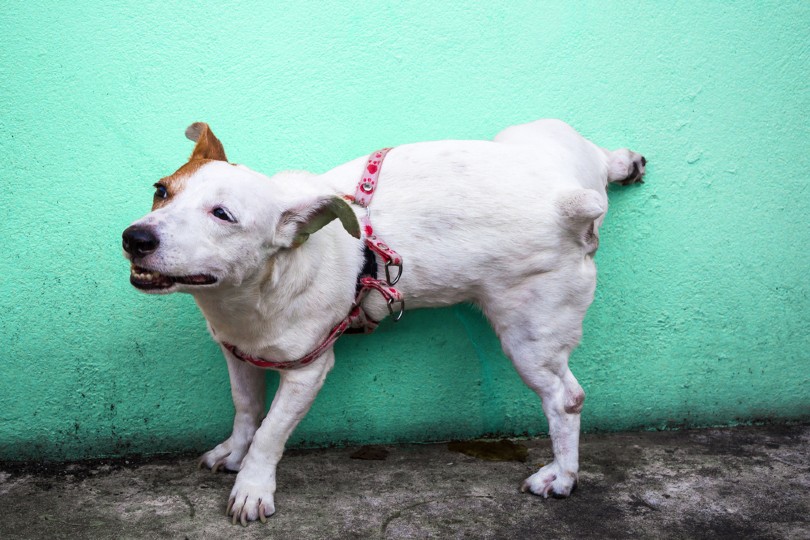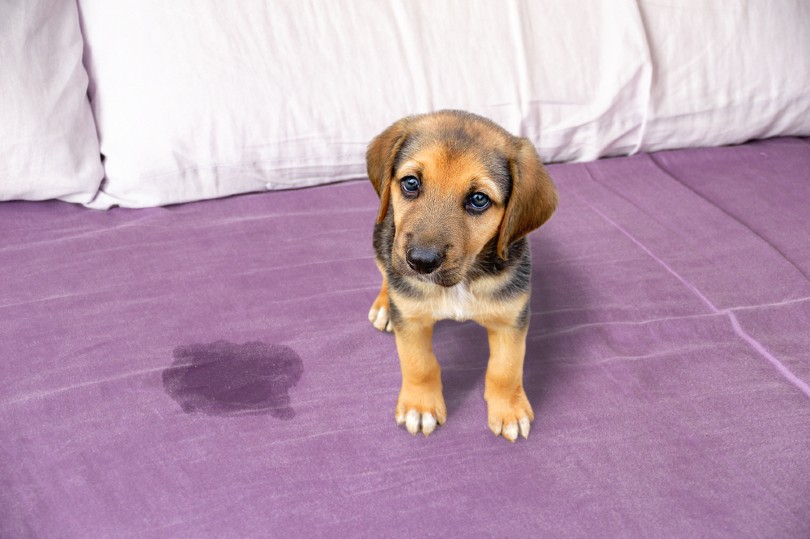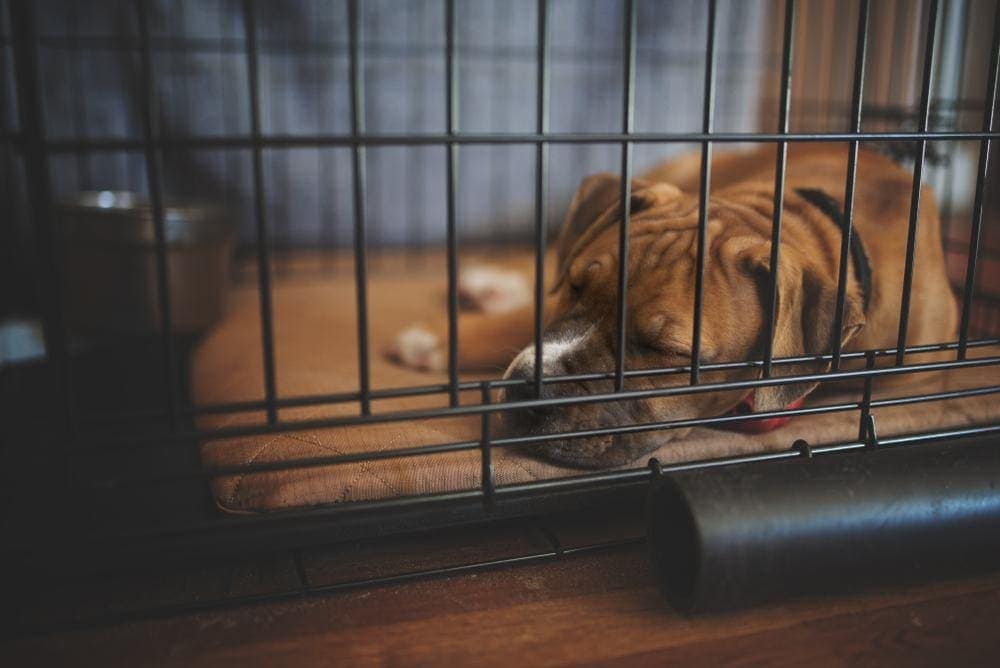Can You Use Baby Shampoo on Dogs? Vet-Reviewed Facts & Safety Guide

Updated on
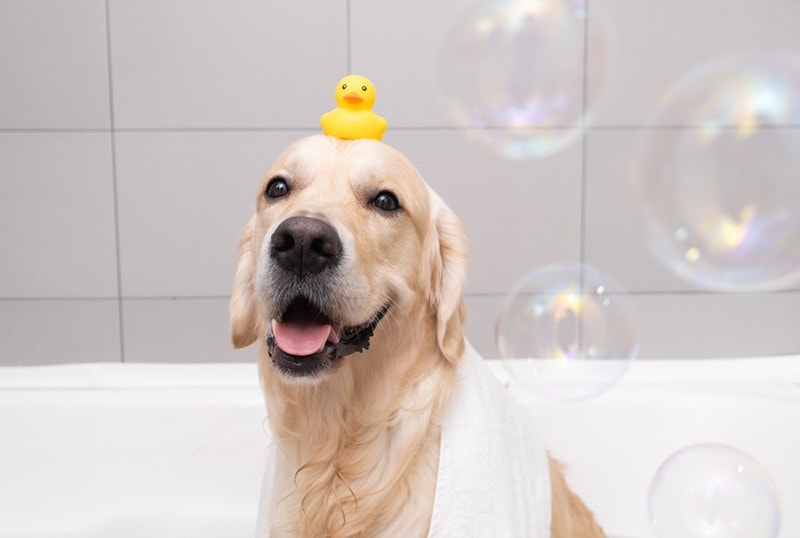
Click to Skip Ahead
While it is generally safe to use baby shampoo on dogs, it’s important to be cautious and consider the specific needs of your dog’s skin and coat. Baby shampoos are milder than regular human shampoos and may be less likely to cause irritation. However, they might not be as effective as dog-specific shampoos in addressing particular skin conditions or grooming requirements. In this comprehensive guide, we’ll explore the benefits and potential drawbacks of using baby shampoo on dogs and provide practical tips for pet owners.
Benefits of Using Baby Shampoo on Dogs
Mild Formulation
Baby shampoos are specifically designed to be gentle on the delicate and sensitive skin of infants, making them a milder option compared to regular human shampoos. This gentleness can be beneficial for dogs, especially those with sensitive skin or who may have adverse reactions to harsher ingredients found in some adult shampoos or even certain dog-specific shampoos.
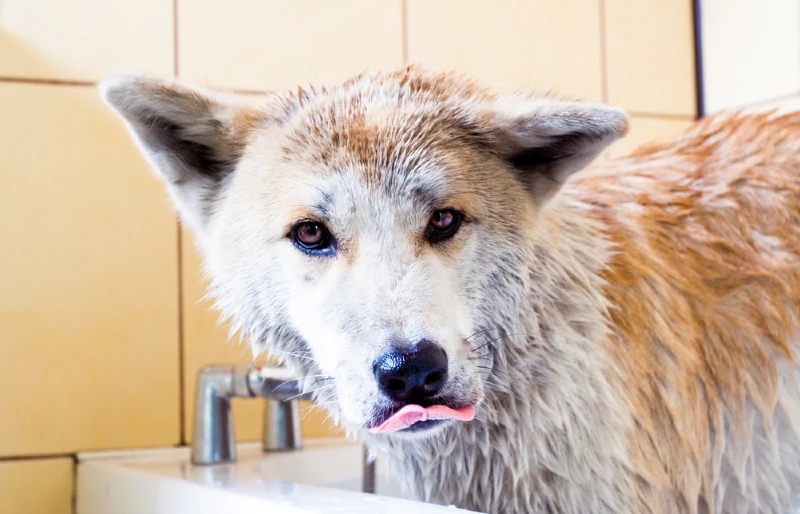
Hypoallergenic Properties
Many baby shampoos are formulated to be hypoallergenic, meaning they are less likely to cause allergic reactions in dogs with sensitive skin. Hypoallergenic shampoos typically contain fewer ingredients and avoid common allergens, which can help minimize the risk of irritation or discomfort for your dog.
Cost-Effective
Baby shampoo can be more affordable than some dog-specific shampoos, making it an appealing option for budget-conscious pet owners. In addition to being budget-friendly, baby shampoos are often readily available at local stores, providing a convenient option for those who may not have easy access to specialty pet stores or prefer to purchase grooming products during their regular shopping trips.
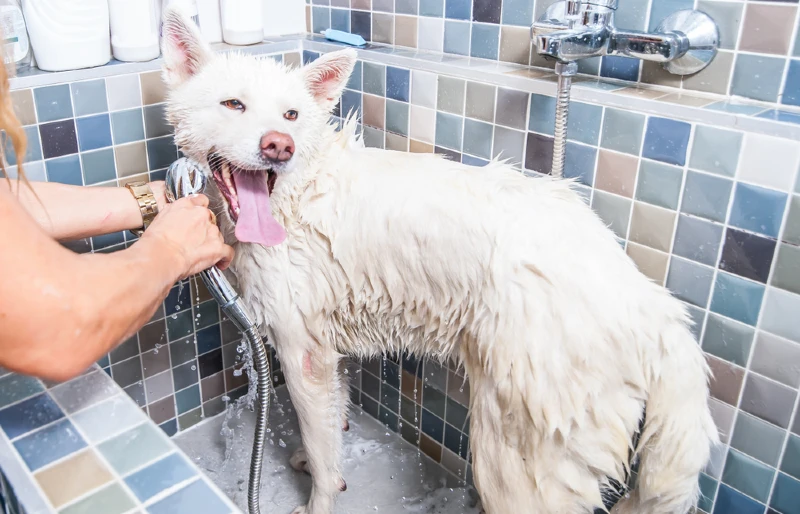
Can Baby Shampoo Cause Skin Irritation in Dogs?
While baby shampoo is generally milder than adult shampoo, it can still cause skin irritation in some dogs, particularly those with sensitive skin or existing skin issues. Several factors can contribute to skin irritation when using baby shampoo on dogs.
Inappropriate pH Balance
Baby shampoos are formulated for human skin pH levels, which are typically more acidic than a dog’s skin pH. A dog’s skin pH ranges from 6.2 to 7.4, while human skin pH is around 5.5. Using a product with an inappropriate pH balance may disrupt your dog’s skin barrier, leading to dryness, irritation, or increased susceptibility to infections.
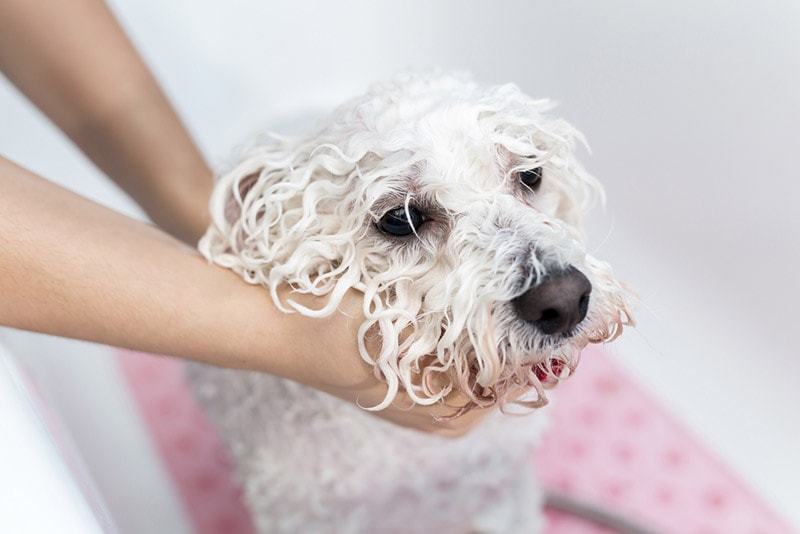
Individual Sensitivities
Some dogs may have individual sensitivities or allergies to specific ingredients found in baby shampoos, even if they are generally considered mild or hypoallergenic. These sensitivities can vary from dog to dog and may result in skin irritation, itching, or inflammation.
Frequency of Use
Using baby shampoo too frequently on your dog can also contribute to skin irritation. Most dogs do not require frequent bathing, and over-bathing can strip their skin of natural oils, leading to dryness and irritation.
To minimize the risk of skin irritation when using baby shampoo on your dog, it’s essential to monitor your pet closely for any signs of discomfort or adverse reactions. If you notice any redness, itching, or other signs of skin irritation after using baby shampoo, discontinue use and consult your veterinarian for guidance on alternative grooming products.
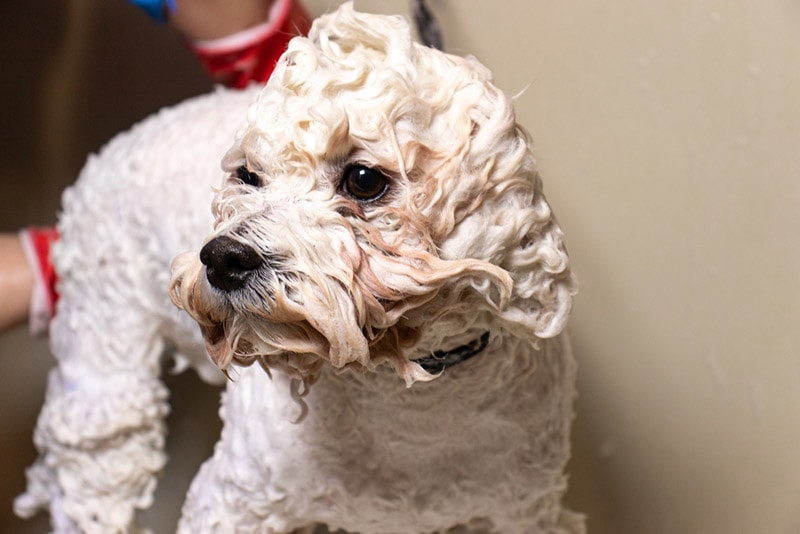
Factors to Consider Before Using Human Shampoo on Your Dog
- Consult your veterinarian: Before using any human product on your dog, even baby shampoo, consult your veterinarian to ensure it’s safe and appropriate for your pet’s specific needs.
- Consider your dog’s skin and coat type: Different dog breeds have varying skin and coat requirements. Choose a shampoo that addresses your dog’s unique needs, whether that’s a dog-specific shampoo or a mild baby shampoo.
- Be prepared to switch if necessary: If you notice any adverse reactions or worsening skin conditions after using baby shampoo on your dog, discontinue use and consult your veterinarian for guidance on alternative grooming products.
How to Use Baby Shampoo on Your Dog
- Sensitivity test: Before using baby shampoo on your dog, perform a patch test by applying a small amount of the shampoo to a discrete area of your dog’s skin. Wait 24 hours to check for any signs of irritation or allergic reaction.
- Dilute the shampoo: Dilute the baby shampoo with water before applying it to your dog’s coat, as this can help reduce the risk of irritation.
- Gentle application: Wet your dog’s coat thoroughly and apply the diluted shampoo, massaging it gently into their fur. Be careful to avoid contact with your dog’s eyes, ears, and nose.
- Rinse thoroughly: Rinse your dog’s coat thoroughly with lukewarm water to remove all traces of shampoo, as any residue left behind can irritate.
Types of Baby Shampoo to Avoid
When selecting a baby shampoo to use on your dog, it’s essential to avoid certain types that may contain ingredients that could be harmful or cause irritation. Here are some types of baby shampoos to avoid and why:
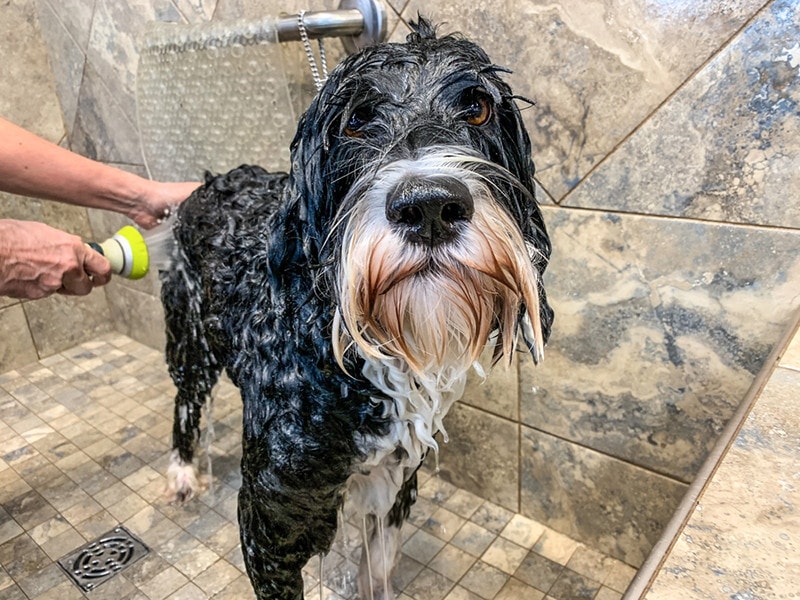
Shampoos With Added Fragrance
Fragrances in baby shampoos can be irritating to a dog’s skin, especially those with sensitive skin or allergies. Strong fragrances can also cause respiratory issues or discomfort for dogs with a sensitive sense of smell. Instead, opt for a fragrance-free or mild, naturally-scented baby shampoo.
Shampoos Containing Harmful Ingredients
Some baby shampoos may contain ingredients that could be harmful to your dog’s skin or overall health. Be cautious of the following ingredients:
- Parabens: These are chemical preservatives commonly used in personal care products, including shampoos. Parabens can cause skin irritations and have even been associated with endocrine disruption and may pose health risks for your dog.
- Phthalates: Phthalates are chemicals used as plasticizers and solvents in various products, including shampoos. They have been linked to hormone disruption and may negatively impact your dog’s health.
- Sulfates: Sulfates, such as sodium lauryl sulfate (SLS) and sodium laureth sulfate (SLES), are surfactants often used in shampoos for their foaming and cleaning properties. However, sulfates can be harsh on your dog’s skin and cause dryness, irritation, or allergic reactions.
Shampoos With Artificial Colors or Dyes
Artificial colors or dyes in baby shampoos can cause skin irritation or allergic reactions in some dogs. Opt for a baby shampoo free of synthetic colors or dyes.
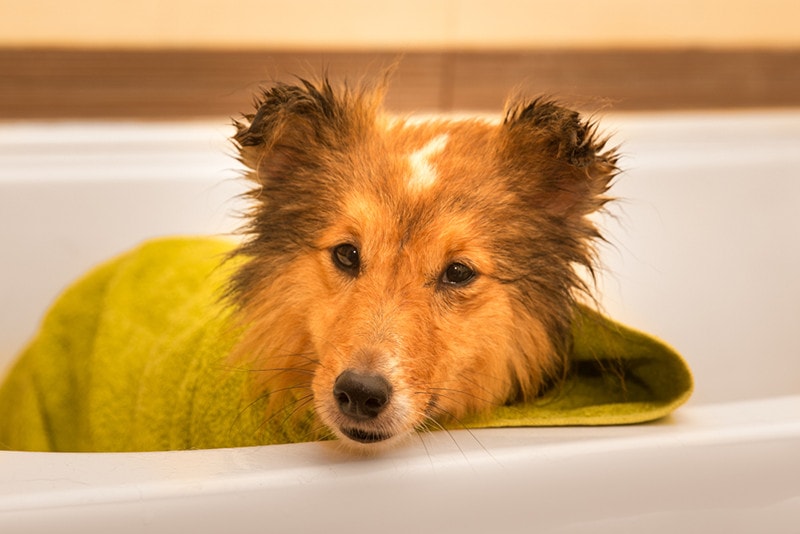
Shampoos With Alcohol
Some baby shampoos may contain alcohol, which can be drying and irritating to a dog’s skin. Look for an alcohol-free baby shampoo to minimize the risk of skin irritation.
When choosing a baby shampoo for your dog, carefully read the label to ensure it is free from these potentially harmful ingredients. Opt for a gentle, fragrance-free, and hypoallergenic baby shampoo that uses natural ingredients to minimize the risk of irritation or adverse reactions. Always consult your veterinarian before using any human product on your dog, especially if they have sensitive skin or pre-existing skin conditions.
Signs Your Shampoo is Not Right for Your Dog
Choosing the right shampoo for your dog is crucial for maintaining their skin and coat health. Using an unsuitable shampoo can cause discomfort, irritation, or exacerbate existing skin issues. Here are some signs that the shampoo you are using may not be right for your dog:
- Itching and scratching: If your dog starts itching and scratching excessively after a bath, it could indicate that the shampoo is causing irritation or an allergic reaction.
- Skin redness and inflammation: Red, inflamed skin after using a shampoo may be a sign that the product is too harsh or contains an ingredient that is causing an adverse reaction in your dog.
- Dry, flaky skin: If your dog’s skin becomes excessively dry and flaky after using a shampoo, it may be stripping away the natural oils needed to maintain healthy skin. This can lead to irritation and discomfort.
- Strong odor or lingering perfume: A strong or lingering scent from the shampoo might be irritating to your dog’s sensitive nose. Additionally, heavily fragranced shampoos can sometimes cause respiratory issues or allergic reactions in dogs.
- Hair loss or thinning coat: If you notice your dog’s coat becoming thinner or hair falling out after using a shampoo, it could be an indication of an adverse reaction to the shampoo.
- Worsening skin issues: If your dog has pre-existing skin conditions, such as allergies, hot spots, or skin infections, and it worsens after using a shampoo, the product may be exacerbating the problem. If your dog has an underlying skin condition we would always recommend using a special dog shampoo recommended by your veterinarian and avoiding human shampoos.
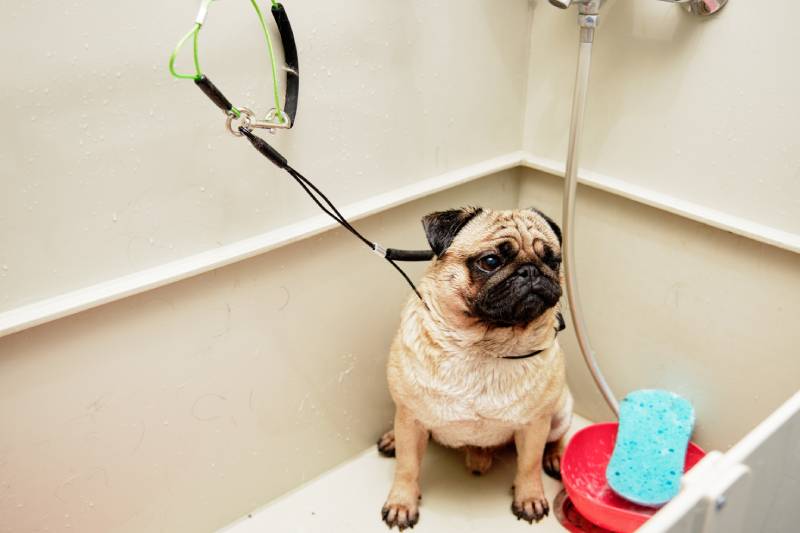
What to Do if Your Shampoo Is Not Right for Your Dog
If you suspect that the shampoo you are using is not suitable for your dog, stop using it immediately. Speak with your veterinarian about their recommendations for a more suitable shampoo. They may suggest a specific product or provide guidance on ingredients to look for or avoid.
Opt for a gentle, dog-specific shampoo formulated for your pet’s skin and coat type. Look for products with natural, soothing ingredients such as oatmeal, aloe vera, or chamomile. Before using a new shampoo, perform a patch test by applying a small amount of the product to a discrete area of your dog’s skin. Wait 24 hours to check for any signs of irritation or allergic reaction.
By paying close attention to your dog’s skin and coat after using a shampoo, you can identify any issues early on and make the necessary adjustments to ensure their comfort and well-being. Always consult your veterinarian if you have concerns about your dog’s skin health or grooming routine.
Our Recommendations Adding a shampoo and conditioner duo to your pet's grooming routine could be the difference in creating a soft, fluffy coat and hydrated, nourished skin. Heppers Oatmeal Pet Shampoo gently lifts dander, dirt, and excess fur without scrubbing away the natural oils important to your cat's derma health. The Pet Conditioner restores any moisture that may have been washed away and will prevent tangles and static. Both are all natural and formulated to soothe irritated skin.
Hepper Oatmeal Pet Shampoo
Hepper Pet Conditioner
All-natural
Fresh, light scent
Cleans fur and skin
Combats tangles & static
Conclusion
Using baby shampoo on dogs can be a safe and cost-effective option for pet owners for occasional use, but it’s important to consider the specific needs of your dog’s skin and coat. Always consult your veterinarian before using any human product on your dog and be prepared to switch to a different shampoo if necessary. By following these tips and guidelines, you can help ensure that your dog remains clean, comfortable, and healthy.
Featured Image Credit: Kashaeva Irina, Shutterstock






